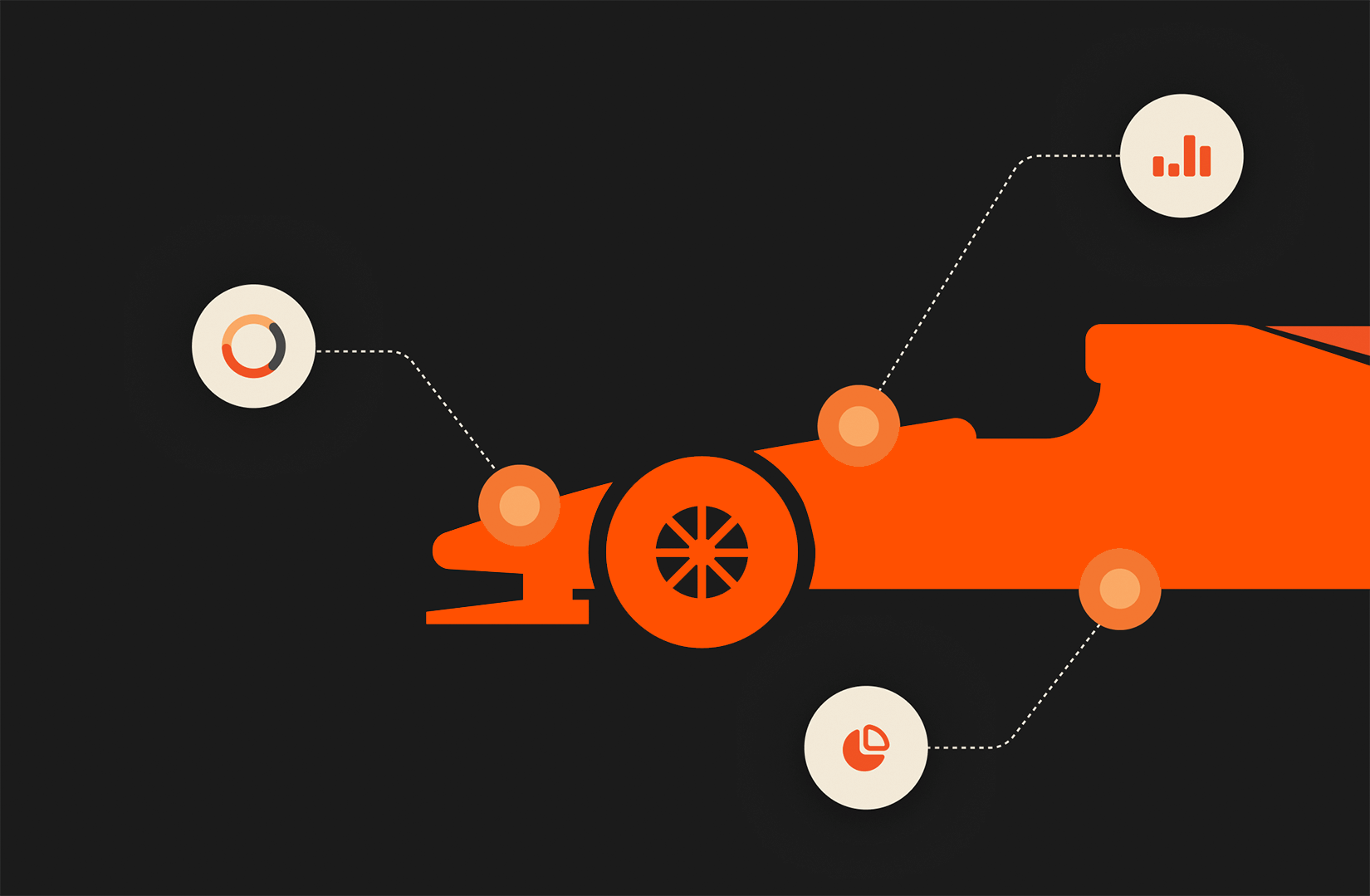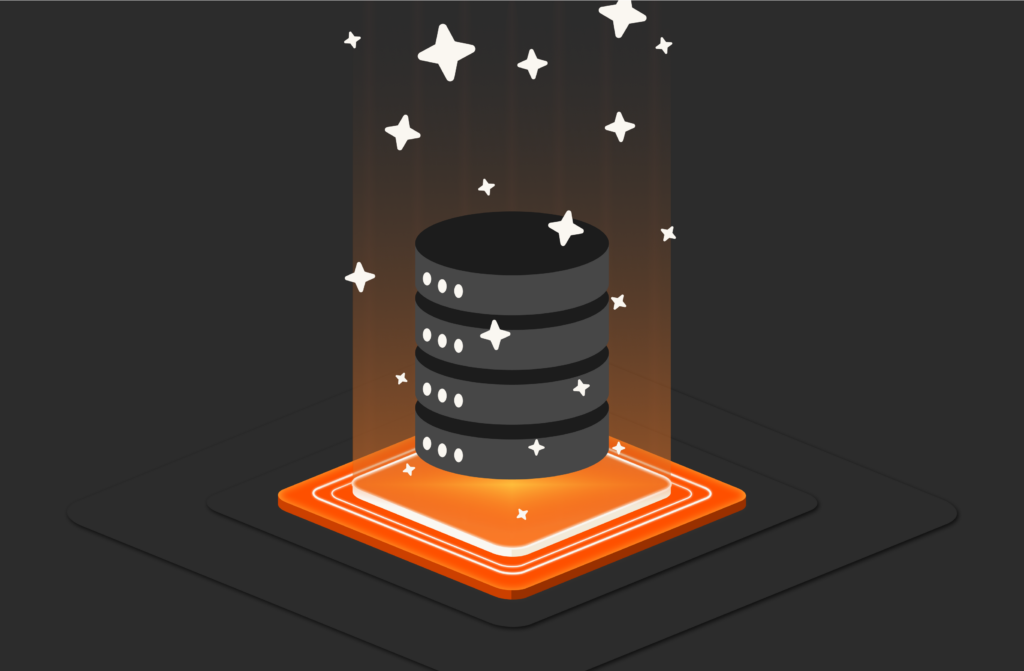Modern Formula 1 (F1) race cars are networked, connected, intelligent machines that can include hundreds of sensors and nearly a mile of wiring. These sensors deliver billions of data points for analysis that help teams outperform the competition.
So where are all of these sensors, what data do they collect, and how is that data used by engineers and drivers? Here’s a closer look at the lean, mean data factories within modern F1 cars.
What sensors are on an F1 car and what data do they collect?
Without going too deep into how cars are built, there are various systems—the engine, exhaust system, gearbox, differential, and aerodynamics—that communicate with one another. The engine control unit (ECU) is the center of a car’s system, and the standard ECU (SECU) is a small, powerful computer within the ECU. The SECU was mandated in 2008 and acts as the core data storage unit on the car, responsible for processing and transmitting data from the car to the team.
There’s also a power control module (PCM), a data logger master control unit (MCU), and the steering wheel, which also acts as a remote data interface for drivers.
Then, sensors are affixed in various places throughout the car. Sensors come in three distinct categories:
- Instrumentation sensors, such as pressure and fuel flow sensors.
- Monitoring sensors, which send channels of data about the health of the car’s systems.
- Control sensors, which turn driver inputs into car outputs (e.g., acceleration or ignition).
They can be magnetic, optical, and even laser-powered. Some examples of specific sensors include:
- Temperature sensors, including engine and airbox temperature sensors, and non-contact temperature sensors that measure friction between parts with infrared energy. Thermal cameras can also provide no-touch heat detection.
- Accelerometers, which measure g-forces created during turns or braking.
- Pressure sensors, measuring hydraulic systems.
- Dual-axis sensors, measuring braking and steering.
- Tire sensors, measuring wear, grip, temperature, and pressure to let engineers know how tires are holding up or affecting the car’s balance.
- Pitot tubes, which are small tubes containing sensors that measure airspeed—the same type of sensor used on commercial airplanes.
- Ultrasonic fluid flow sensors, which monitor fuel performance.
- Lasers, which measure the car’s distance from the ground.
- Damper potentiometers, measuring spring compression and chassis roll response.
And don’t forget the F1 car’s version of a “black box”—the accident data recorder (ADR), which is also collecting sensor data and serves an immediate alert when an accident occurs.
How does sensor data get from the car to the team?
Sensors and other components onboard the car broadcast data between one another via networking built into the car, which gets logged to an onboard server. That data is then encrypted and sent to the teams via radio frequency from an antenna mounted on the car. All of this happens within fractions of a second.
This isn’t just any radio frequency. On tracks located in more congested cities like Singapore, it can be difficult to cut through the noise on race day. Formula One Management (FOM) created a standardized communication network that leverages fiber link and shared access points that offer encrypted communications for each team between car and garage. This sends small packets of real-time data while cars can also emit a microwave burst of data when it’s within range during a pit stop.
What happens with the sensor data that’s collected from the car?
In an article on how Formula 1 teams get agile data at the edge, we looked at how data is collected, processed, and stored with mobile data centers. But what do engineers do with that data?
Back in the Race Support Room, data is processed and blended with audio and video data to paint a clearer picture for:
- Pre-race testing. Similar to an airline pilot running a pre-flight checklist, pre-race sensor tests are performed by a data engineer, including calibration checks and tuning for conditions of each track. Every circuit is unique, which makes these pre- and mid-race sensor readings so critical.
- Mid-race monitoring. On the day of the race, engineers can detect problems with monitoring, allowing the driver to make split-second adjustments. Say a driver is hot on the tail of a competitor in an aggressive attempt to overtake. The exhaust of an F1 car—with temperatures ranging from 950 to 1,000 degrees—can be like putting the car in an oven. If engine temperatures start rising to a dangerous level, engineers can tell the driver to back off until things cool down.¹
- Regulatory compliance. The Federation Internationale de l’Automobile (FIA), the governing body for F1, has strictly regulated what technologies are allowed on board, and they tightly monitor those via sensor data. Each team’s data center is directly connected to the FIA.
- Strategic intelligence. Data from the car isn’t just stored after a race—it’s added to and processed into future seasons. Competitor data plays an important role, too. Sensor data can be analyzed from a car in isolation or paired with the data of competitors. Look at turns, for example. These are a great use case for overlaying sensor data with competitor data to compare two lines on the same turn to see whose apex is best.
- Driver behavior. Sensors generate telemetry and logging data from the car itself, but they also monitor driver behaviors. This data is a great tool for teams to give drivers quantifiable feedback on how to improve their handling. Driver metrics include what percentage of a lap a driver spends at full throttle, how they’re using the brakes, and how they’re taking turns.
F1: Driven by Data
Modern F1 cars are incredibly impressive, complex systems that have become more sophisticated over the years, giving engineers (and drivers) more responsibility but also more insight. Today, winning is a successful marriage of the two—instinct driven by data.
Like this article and want to read more? Sign up for our monthly Perspectives email today. And we promise not to spam you, just inform and inspire you!
- https://www.mclaren.com/racing/inside-the-mtc/f1s-fantastical-facts/#:~:text=4.,aluminium%20(660%C2%B0C).

Written By:







